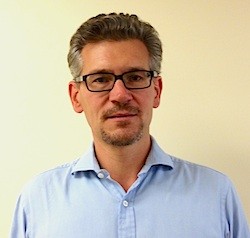
Some financial institutions in Europe are moving to rein in legacy market-data system dependencies that are among the most expensive line items on operating budgets.
Traditional vendors must become more competitive with pricing and upgraded paths to manage market changes such as increasing message rates and enhanced functional requirements, or else step aside for more nimble, flexible, and cost-efficient technologies, according to Frank Piasecki, president and co-founder of Activ Financial.
“In Europe, no one has tapped into the enterprise platform market dominated by a single player for many years,” Piasecki told Markets Media.
EMEA is a ‘show-me’ space with regard to new technologies, compared with Asia for example, according to Piasecki. “Europe is more conservative — institutions have very long relationships with their current providers, with people, application programming interfaces, and symbologies,” he said.
Market regulation, performance requirements, and internal awareness are key factors prompting European operators to review their market-data delivery systems, Piasecki said. There has been a shift from demand for market-data delivery alone to a need for a seamless combination of market data and the underlying delivery technology.
Piasecki and Ben Collins, Activ’s newly appointed EMEA director, see Europe’s big banks increasingly turning to ‘as-a-service’ platforms to deliver new types of data. Users can be in corporate offices, trading floors, exchange co-location facilities, public clouds, or even mobile devices.

Ben Collins, Activ Financial
Activ shuttles granular content from more than 200 equity and derivatives exchanges around the world as an end-to-end, independent market data utility.
“The watchword across our global client base is reliability,” Collins noted. “The focus is not on a small element of content or delivery, but on completeness of data for trading as well as latency so that clients needing to prove best execution, due diligence and compliance on behalf of their customers can do so.”
Cost constraints and shifting market dynamics are pushing market participants to conduct root-and-branch reviews of their data-management needs, from content to technologies, explained Collins. “Everyone wants improved reliability, completeness, (and) lower-latency criteria,” he said.
A bank’s core business is not data processing. This is driving the need for specialist capabilities from vendors to capture data, filter it, and employ optimal processes for the user to interact with the content. All of this is measured in terms of total cost for the messages, rate or load. Changing a system in use is not a swap of one off-the-shelf product to another, the Activ team said.
Activ said it is on its third or fourth generation of market data technology; capacity improvements have come through a single machine appliance that can replace hundreds of cores. Institutions are seeking to reduce costs by looking at the number of boxes currently required to handle the data memory and processing, speed of distribution, and the number of people needed to support the data.
The EMEA region is ‘high-touch’ in sales vernacular, and introducing completely new alternative services for data is challenging. Success in changing a mindset requires connecting with the right person within an institution, who can tangibly react to the performance and flexibility the market data provider has to offer versus legacy products supplied by one longstanding utility in the space, Collins said.
Institutional clients preparing for real changes have a prime directive of understanding and quantifying investment return benefits, said Piasecki. They are confronted with potential switching and implementation risks and other concerns associated with ripping out critical enterprise systems, but weigh this against expected efficiencies from competitive pricing and more fluid upgrade paths that an alternative utility demonstrates.
Activ’s headquarters is in Chicago, with a main corporate sales and operations office for North America in New York. Technology resources are spread across several continents with a sales and support facility in London for EMEA, and Pacific Rim groups in Tokyo, Hong Kong and Sydney.
